This article was co-authored by Zora Degrandpre, ND and by wikiHow staff writer, Megaera Lorenz, PhD. Dr. Zora Degrandpre is a Natural Health Doctor and Licensed Naturopathic Physician in Vancouver, Washington. She is a grant reviewer for the National Institutes of Health and the National Center for Complementary and Alternative Medicine. She received her ND from the National College of Natural Medicine in 2007.
There are 39 references cited in this article, which can be found at the bottom of the page.
This article has been viewed 95,422 times.
Your skin is your body’s biggest organ, and it shields the rest of your body from dirt, germs, and other everyday dangers of the outside world. Since it has such an important job to do, taking good care of your skin is a major part of protecting your overall health! If you have sensitive skin or are nervous about using a lot of artificial chemicals in your skincare routine, there are lots of gentle, natural options you can turn to. Take care of your skin by cleaning and moisturizing it daily and using gentle products like plant oils and colloidal oatmeal.
Steps
Cleansing, Exfoliating, and Moisturizing Your Skin
-
1Wash your skin twice a day and whenever you sweat. Washing gets rid of oils, dirt, bacteria, and other nasty stuff that builds up on your skin throughout the day. Wash your face in the morning and evening to prevent clogged pores and breakouts.[1] While dermatologists don’t all agree on how often you should shower, most say it’s a good idea to do it several times a week (e.g., every other day).[2]
- It’s good to break a sweat sometimes, but letting sweat sit on your skin can cause acne breakouts and irritation. If it’s hot out or you’ve been hitting the gym, change out of your sweaty clothes as soon as possible, take a shower, and wash your face. Wash any sweaty clothes before wearing them again.[3]
- Wash up immediately after being in a swimming pool or in the ocean.
- If you wear makeup, wash it off every evening before you go to bed with an oil-free makeup remover and a gentle cleanser.[4]
-
2Cleanse yourself with warm water. Using hot water when you shower or wash your face can dry out and irritate your skin. Stick to washing with comfortably warm water instead.[5]
Tip: Spending too much time in a shower or bath is also hard on your skin, so try to keep it short. Some dermatologists recommend keeping most showers no more than 3-4 minutes long and focusing on just the dirtiest areas (like your armpits and groin).[6]
Advertisement -
3Apply your cleanser with your fingertips or a soft cloth. While exfoliating your skin occasionally can give it a healthy glow, regular scrubbing can cause irritation. Be kind to your face and wash it with your fingers instead of sponges or washcloths.[7] When you bathe or shower, use a soft washcloth on your body if you want a little gentle exfoliation.[8]
- If you have a skin condition such as psoriasis, don’t use washcloths, loofahs, sponges, or scrub brushes. Stick to gently cleansing your skin with your hands.[9]
-
4Rinse off your cleanser thoroughly when you’re done. Even a gentle cleanser can irritate your skin if you don’t rinse it away when you’re done washing! Use warm water and your hands to gently rinse away any residue that’s left on your skin.[10]
- If you like, you can rinse your face with cool water when you’re done cleaning it. The cold temperatures will temporarily tighten up your skin and minimize the appearance of pores.[11]
-
5Pat your skin dry with a clean, dry towel. When you’re done washing up, don’t rub your skin with a towel, since this can be irritating. Instead, take a soft towel and blot or pat your skin to remove excess moisture. Your skin will thank you for the TLC![12]
- If you have dry skin, apply a little moisturizer immediately after patting yourself dry, while your skin is still slightly damp.
-
6Exfoliate your skin gently 2-3 times a week. If your skin tends to get flaky or uneven, a little gentle exfoliation can help. However, don’t do it every day or use harsh scrubs, since this can damage your skin and even lead to breakouts.[13] Apply a gentle exfoliating wash, such as an oatmeal-based exfoliant, with your fingertips.[14] Use small, gentle, circular motions. Rinse the exfoliant away with warm water when you’re done.
- If you have really sensitive skin, talk to a dermatologist about dermaplaning. This procedure involves gently shaving the skin with a razor to remove fine hairs and dead skin cells. It’s gentler than most forms of exfoliation, including scrubs and chemical peels.[15]
-
7Moisturize your skin whenever you shower or wash your face. Bathing, showering, or washing your face can all dry out your skin. To keep your skin happy, soft, and hydrated, put on moisturizer as soon as you’re done washing, while your skin is still slightly damp.[16]
- If you have very dry skin, you may need to moisturize it several times a day.
- Your hands are especially prone to dryness, since they get a lot of exposure to the elements and must be washed frequently. Try to remember to moisturize your hands any time you wash them, do the dishes, or apply hand sanitizer.
Choosing the Right Products
-
1Use cleansers and moisturizers that are free of dyes, perfumes, and alcohol. Skincare products with harsh ingredients can dry out your skin or even cause allergic reactions.[17] Look for face and body cleansers and moisturizers that are free of these types of ingredients.[18]
- Chemical preservatives, such as parabens, can also harm your skin. Choose cleansers and other skincare products that are paraben-free.[19]
- Some people may also have bad reactions to ingredients such as retinoic acid (an anti-aging ingredient), salicylic acid (a chemical exfoliant), or common plant-based allergens, like nuts and berries.[20]
-
2Select a moisturizer that won’t clog your pores. No matter what skin type you have, it’s a good idea to use a moisturizer that won’t clog up your skin with oils. Look for products that are labeled “non-comedogenic” or “won’t clog pores.”[21]
- This is especially important if you have oily or acne-prone skin, since pore-clogging moisturizers could lead to breakouts.
Tip: Most skin types can benefit from a moisturizer that contains sunscreen! Choose a light, oil-free moisturizer with a sun protection factor (SPF) of at least 30.[22]
-
3Pick a moisturizer with lactic acid if your skin is extremely dry. If you have really dry skin, lactic acid is a strong natural moisturizer that helps pull moisture into your skin and keep it there. Apply it to stubborn dry areas, such as your arms, hands, legs, and feet.[23]
- Lactic acid is also great for evening your skin tone and reducing roughness.[24]
- You can also use thick or oily moisturizers, such as petroleum jelly, coconut oil, or cocoa butter on very dry areas. However, avoid using these products on your face or acne-prone areas, since they can clog your pores and cause breakouts.
-
4Get calming ingredients like chamomile or aloe if your skin is sensitive. It can be tough to treat skin that’s prone to redness, rashes, or itching. Look for moisturizers with gentle, natural ingredients that have anti-inflammatory properties. Chamomile and aloe are both great options.[25]
- In addition to smelling nice, lavender essential oil is also a great for sensitive skin due to its anti-inflammatory properties.[26]
- If you use any essential oils, always dilute 2-3 drops in 1 teaspoon (4.9 mL) of a carrier oil, such as jojoba or sunflower oil, before applying them to your skin. Otherwise, you may irritate your skin.[27]
Treating Common Problems
-
1Apply tea tree oil to blemishes to reduce inflammation. Tea tree oil can help fight bacteria and soothe inflammation, making it a powerful natural remedy for acne and other skin conditions.[28] If you struggle with acne or blotchy, uneven skin, grab some tea tree oil from your pharmacy or beauty supply store. Dilute 2-3 drops in 1 teaspoon (4.9 mL) of a gentle carrier oil, such as jojoba or olive oil. Gently apply it to any blemishes or inflamed areas once a day with a cotton swab or your fingertips.[29]
- Tea tree oil tends to have fewer side effects than most over-the-counter acne medications. However, it may irritate some people’s skin. Always test it on another part of your body, such as the back of your knee or behind your ear, and wait a few hours to see if you experience any negative effects before putting it on your face.
- Tea tree oil is toxic when ingested. Never eat or drink it.
-
2Use onion extract gel once a day to minimize scars. Scars can be painful or embarrassing, but luckily, there are natural remedies that can help! Gels or creams containing onion extract have been shown to soften and reduce the appearance of scars. If you have scars from acne or injuries to your skin, purchase a scar-reducing product containing onion extract and apply it to the affected area(s) once daily or as often as recommended on the package.[30]
- Test a small amount of the product on another area of your body (such as your arm or leg) to see if it causes any ill effects before putting it on your face. Some people are sensitive to onion gel.[31]
-
3Reduce wrinkles with a vitamin C serum. Vitamin C can help repair your skin and protect it from sun damage. To even out your skin and plump out any annoying fine lines and wrinkles, pick up a vitamin C serum or cream at your local drug store or beauty supply store.[32] Check the label to determine how often to use your serum.
- When you first start using a vitamin C serum, you may notice stinging or redness. If this happens, don’t give up right away! These side effects usually go away over time as you continue using the product and your skin gets used to it.[33]
-
4Minimize excess oil with a witch hazel lotion or toner. Witch hazel is an astringent, meaning that it helps tighten your pores and reduce oil production. It can also reduce inflammation and help fight bacteria that cause acne and skin irritation.[34] If you have oily skin, look for toners, cleansers, or lotions with witch hazel.
- Be careful using witch hazel, since astringents can cause irritation for some people. Stop using it if it dries out or irritates your skin, or if you start to experience breakouts.[35]
-
5Treat dry or itchy skin with an oatmeal bath. Finely ground (colloidal) oatmeal can help improve skin dryness, itching, and irritation. It can also strengthen your skin’s natural barrier and protect it from moisture loss and damage.[36] Try relaxing in a warm bath with a colloidal oatmeal soak (such as Aveeno Bath) to relieve itching and dryness.[37]
- You can also get lotions, creams, masks, and exfoliants that are oatmeal-based.
Preventing Skin Damage
-
1Wear a sunscreen with an SPF of at least 30. It feels good to soak up some rays when the weather is warm, but too much sunlight can age your skin prematurely and put you at risk of developing skin cancer. Keep your skin healthy by putting on a broad-spectrum sunscreen with a sun protection factor (SPF) of 30 or higher. If you plan to be in the water or think you’ll be breaking a sweat, use a sunscreen that’s labeled “water resistant.”[38]
- Put on protective clothing if you plan to spend time in the sun. For example, wear a long-sleeved shirt and put on a hat and sunglasses.[40]
- As much as possible, avoid being out in the sun between 10 AM and 4 PM, which is when the sun is harshest. Try to stay in the shade if you’re outdoors during these times.
- If you’ll be out in the sun for a long time, re-apply your sunscreen every 2 hours, or even more often if you’re in the water.
Tip: If you have sensitive skin, look for sunscreens that list zinc oxide or titanium dioxide as their active ingredient.[39]
-
2Use shaving cream, gel, or lotion whenever you shave. Shaving is one of the safest and gentlest ways to remove unwanted hair, but it can cause irritation if you don’t do it carefully. Before you shave, wash and wet your skin. Apply a shaving cream or gel, then carefully shave in the direction of your hair’s growth to prevent razor bumps and burns.[41]
- You can also prevent irritation and infections by caring for your razor properly. Always rinse it after shaving, and store it in a dry, clean area. Change your razor blade after every 5-7 shaves.
-
3Eat a healthy, balanced diet to promote skin health. What you eat can make a big difference in the health of your skin. To make sure your skin is getting all the nutrients it needs, eat a diet rich in vegetables and fruits, whole grains, lean proteins (like those in fish, poultry breast, and peas and beans), and healthy fats (such as those in vegetable oils, nuts, and seeds).[42]
- Avoid greasy and sugary foods, which can cause inflammation.
- Drink plenty of water throughout the day to help keep your skin hydrated.
-
4Do stress-reducing activities to minimize inflammation. Stress can cause inflammation throughout your body, which may trigger breakouts and make your skin more sensitive.[43] It may even cause skin conditions like eczema or psoriasis to get worse![44] If you’re stressed, try doing things that help you relax and unwind, such as:
- Meditation or yoga
- Exercising
- Listening to peaceful music
- Spending time with your friends and family
- Working on creative projects or hobbies
- Going outside
-
5Avoid smoking to prevent premature skin aging. Smoking can damage almost every part of your body, and your skin is no exception. If you smoke, quit or cut back to prevent wrinkles and promote better circulation in your skin.[45]
- Quitting smoking can be extremely difficult. If you’re not sure how to stop, talk to your doctor. They can give you advice or prescribe medications that can help.
When to Seek Medical Treatment
-
1See a doctor for dry skin that doesn’t get better with home treatment. Most of the time, dry skin isn’t serious and can be treated with simple home remedies. Sometimes, however, it can cause more serious problems or be a sign of an underlying condition. If you have dry skin that doesn’t get better even with moisturizers and proper home care, see your doctor. You should also get medical help if:[46]
- You have redness along with dry skin
- The dryness causes so much itching or discomfort that you can’t sleep
- You’ve developed open sores or infections in your skin (often caused by excessive scratching)
- Large areas of your skin are scaling or peeling
-
2Call your doctor if you develop a rash that doesn’t go away in 1 week. Skin rashes can have many different causes, but most of them aren’t serious. However, if you develop a rash that doesn’t heal up on its own or with home care within a week, it’s best to have a doctor check it out.[47]
- You should also get medical attention if your rash gets worse even with home care, shows signs of infection (such as swelling or discharge), or is accompanied by other symptoms, such as fever, sore throat, swollen glands, fatigue, or swollen joints.
- Go to the emergency room or call emergency services if you have a rash along with difficulty breathing, a rapid heart rate, nausea, confusion, or hives.
-
3Get medical attention for severe or unexplained itchy skin. Itchy skin can be caused by dryness, irritation, or illness. Most of the time, it’s nothing to worry about, but it may require medical treatment in some cases. Itchy skin can be a sign of an underlying condition, such as an allergy, liver disease, or an infection. Go to your doctor for itchy skin if:[48]
- The itching lasts longer than 2 weeks, even with home care.
- Your itching is so severe that it prevents you from sleeping or makes it hard to focus on day-to-day activities.
- The itching comes on suddenly and has no obvious cause.
- Your entire body feels itchy.
- You have other symptoms, such as fatigue, unexplained weight loss, fever, redness of the skin, or changes in your bathroom habits (such as diarrhea, constipation, or frequent urination).
-
4Visit your doctor if you have red skin along with other severe symptoms. Red skin is a common symptom of sunburn and a variety of other skin conditions, such as dermatitis or rosacea. If you’re not sure what’s causing your red skin or if you have other worrisome symptoms, make an appointment with your doctor. Seek medical care if:[49]
- You have unexplained redness that doesn’t go away in a few days.
- The red skin covers a large area of your body.
- You have other symptoms, such as a fever or pain.
- The redness starts suddenly and quickly spreads.
- You notice blistering in the red area.
- You see signs of an infection, such as warmth, swelling, pus, or discharge in the affected area.
-
5Make an appointment for wounds or ulcers that don’t heal up in a week. Most minor skin wounds heal up or improve significantly within 1-2 weeks. If you have open sores, wounds, or ulcers that don’t heal up in that time, have them checked out by a doctor.[50]
- Having open wounds puts you at risk of developing a severe skin infection.
- Wounds that don’t heal can also be a sign of a more serious underlying health condition, such as diabetes or blood clots.[51]
-
6Go to a dermatologist if you notice changing or unusual moles. Most people have at least a few moles on their skin. If you have moles, keep an eye on them during your regular skin care routine. In rare cases, moles can become cancerous. Call your doctor or dermatologist if you notice:[52]
- That a mole is asymmetrical in shape
- Moles with an irregular border
- Changes in the color of your moles
- That your mole is growing, especially if the growth is more than 1⁄4 inch (6.4 mm) in diameter
- Other changes in a mole (e.g., if the mole changes in height or shape, develops itching or bleeding, or turns completely or partially black)
-
7Talk to your doctor about severe or persistent acne. Acne is a common and aggravating skin problem, especially for teens. Mild acne will often go away on its own and can be managed with good skin care and home remedies. However, more severe cases are harder to control and can cause pain, scarring, and embarrassment. See your doctor or dermatologist for acne if:[53]
- You’ve been using home remedies or over-the-counter treatments without success
- You have acne that comes on suddenly when you’re an adult
- Your acne is causing you pain or upsetting you emotionally
-
8Seek medical care if you have a severe reaction to a skin care product. Even mild, natural skin care products can occasionally cause irritation or an allergic reaction. Stop using any skin care product if it causes symptoms such as irritation, itching, redness, or peeling. For more severe reactions, you may need to see a doctor or get emergency care.[54]
- Call your doctor if a rash from a skin care product is extremely painful, severe, or widespread, or if it comes on suddenly. You should also see a doctor for rashes on your face or genitals.
- Even if your reaction isn’t severe, see your doctor if it doesn’t clear up on its own within 3 weeks.
- Go to the emergency room or call emergency services if you see signs of a skin infection after using a skincare product (such as a fever or oozing blisters).
- Get emergency care for signs of a serious allergic reaction, such as difficulty breathing, a rapid heart rate, confusion, nausea, or swelling of your face, tongue, or throat.
References
- ↑ https://www.aad.org/public/everyday-care/skin-care-basics/care/face-washing-101
- ↑ https://www.health.harvard.edu/blog/showering-daily-is-it-necessary-2019062617193
- ↑ https://www.aad.org/public/everyday-care/skin-care-secrets/routine/prevent-summer-skin-problems
- ↑ https://www.aad.org/public/diseases/acne/causes/makeup
- ↑ https://www.mayoclinic.org/healthy-lifestyle/adult-health/in-depth/skin-care/art-20048237
- ↑ https://www.health.harvard.edu/blog/showering-daily-is-it-necessary-2019062617193
- ↑ https://www.aad.org/public/everyday-care/skin-care-basics/care/face-washing-101
- ↑ https://www.aad.org/public/everyday-care/skin-care-secrets/routine/safely-exfoliate-at-home
- ↑ https://www.aad.org/public/diseases/psoriasis/skin-care/baths-showers
- ↑ https://www.aad.org/public/diseases/psoriasis/skin-care/baths-showers
- ↑ https://aestheticsjournal.com/feature/the-impact-of-winter-on-the-skin
- ↑ https://www.mayoclinic.org/healthy-lifestyle/adult-health/in-depth/skin-care/art-20048237
- ↑ https://www.aad.org/public/everyday-care/skin-care-secrets/routine/safely-exfoliate-at-home
- ↑ https://www.ncbi.nlm.nih.gov/pmc/articles/PMC3508548/
- ↑ https://wexnermedical.osu.edu/blog/shave-your-way-to-brighter-smoother-skin
- ↑ https://www.mayoclinic.org/diseases-conditions/dry-skin/in-depth/moisturizers/art-20044232
- ↑ https://www.ncbi.nlm.nih.gov/pmc/articles/PMC3858659/
- ↑ https://www.mayoclinic.org/healthy-lifestyle/adult-health/in-depth/skin-care/art-20048237
- ↑ https://wexnermedical.osu.edu/blog/skincare-ingredients-to-use-and-avoid
- ↑ https://health.clevelandclinic.org/day-or-night-what-to-look-for-in-a-facial-cream/
- ↑ https://www.mayoclinic.org/diseases-conditions/dry-skin/in-depth/moisturizers/art-20044232
- ↑ https://www.mayoclinic.org/diseases-conditions/dry-skin/in-depth/moisturizers/art-20044232
- ↑ https://www.mayoclinic.org/diseases-conditions/dry-skin/in-depth/moisturizers/art-20044232
- ↑ https://www.mdpi.com/1420-3049/23/4/863/htm
- ↑ https://www.mayoclinic.org/diseases-conditions/dry-skin/in-depth/moisturizers/art-20044232
- ↑ https://www.hindawi.com/journals/ecam/2018/1413940/
- ↑ https://www.takingcharge.csh.umn.edu/how-do-i-choose-and-use-essential-oils
- ↑ http://www.ijdvl.com/article.asp?issn=0378-6323;year=2007;volume=73;issue=1;spage=22;epage=25;aulast=Enshaieh
- ↑ https://www.takingcharge.csh.umn.edu/how-do-i-choose-and-use-essential-oils
- ↑ https://www.mdedge.com/obgyn/article/54870/aesthetic-dermatology/onion-extract-improved-scars-36
- ↑ https://www.ncbi.nlm.nih.gov/pmc/articles/PMC6239165/
- ↑ https://www.ncbi.nlm.nih.gov/pmc/articles/PMC5579659/
- ↑ https://my.clevelandclinic.org/health/articles/10980-understanding-the-ingredients-in-skin-care-products
- ↑ https://www.ncbi.nlm.nih.gov/pmc/articles/PMC4025519/
- ↑ https://www.mayoclinic.org/diseases-conditions/acne/diagnosis-treatment/drc-20368048
- ↑ https://jddonline.com/articles/dermatology/S1545961616P0684X
- ↑ https://www.mayoclinic.org/diseases-conditions/itchy-skin/diagnosis-treatment/drc-20355010
- ↑ https://www.aad.org/public/everyday-care/sun-protection/sunscreen/how-to-select-sunscreen
- ↑ https://www.aad.org/public/everyday-care/sun-protection/sunscreen-patients/best-sunscreen-ingredients
- ↑ https://www.mayoclinic.org/healthy-lifestyle/adult-health/in-depth/skin-care/art-20048237
- ↑ https://www.aad.org/public/everyday-care/skin-care-basics/hair/how-to-shave
- ↑ https://www.mayoclinic.org/healthy-lifestyle/adult-health/in-depth/skin-care/art-20048237
- ↑ https://www.mayoclinic.org/healthy-lifestyle/adult-health/in-depth/skin-care/art-20048237
- ↑ https://www.aad.org/public/diseases/eczema/childhood/triggers/stress
- ↑ https://www.mayoclinic.org/healthy-lifestyle/adult-health/in-depth/skin-care/art-20048237
- ↑ https://www.mayoclinic.org/diseases-conditions/dry-skin/symptoms-causes/syc-20353885
- ↑ https://www.drugs.com/health-guide/rash.html
- ↑ https://www.mayoclinic.org/diseases-conditions/itchy-skin/symptoms-causes/syc-20355006
- ↑ https://www.aad.org/public/everyday-care/itchy-skin/rash/rash-101
- ↑ https://health.clevelandclinic.org/got-skin-problems-can-tell-specialist-best/
- ↑ https://health.clevelandclinic.org/why-you-shouldnt-ignore-a-wound-that-wont-heal/
- ↑ https://www.mayoclinic.org/diseases-conditions/moles/symptoms-causes/syc-20375200
- ↑ https://www.mayoclinic.org/diseases-conditions/acne/symptoms-causes/syc-20368047
- ↑ https://www.mayoclinic.org/diseases-conditions/contact-dermatitis/symptoms-causes/syc-20352742
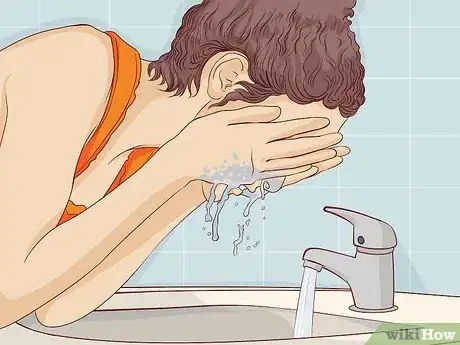






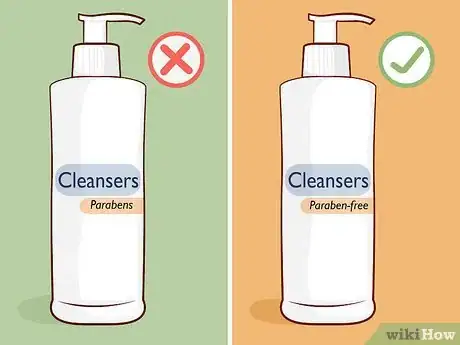
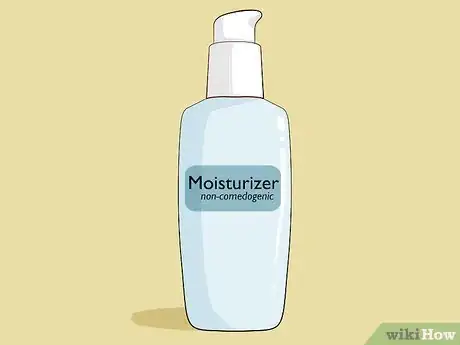

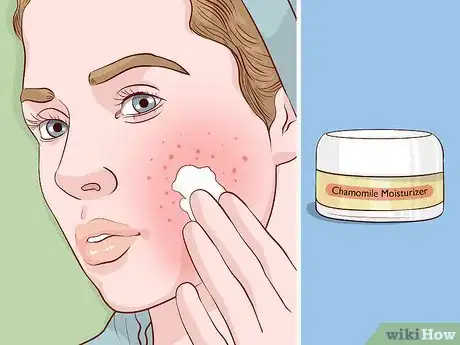

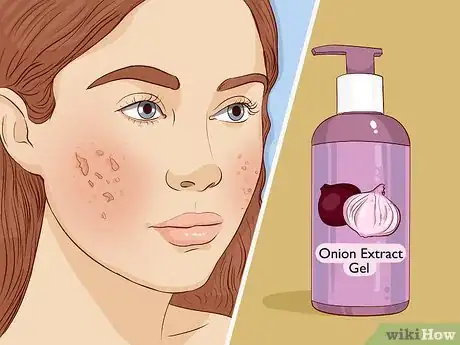
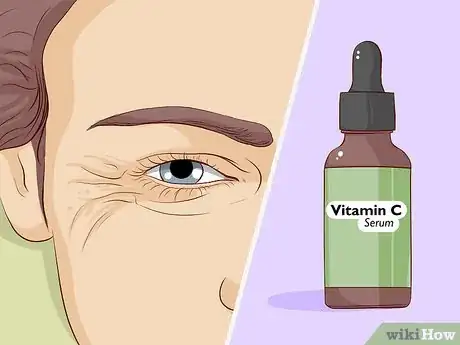

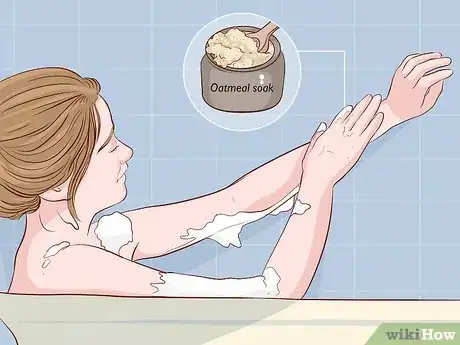
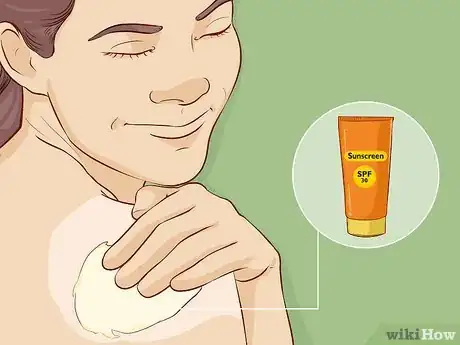
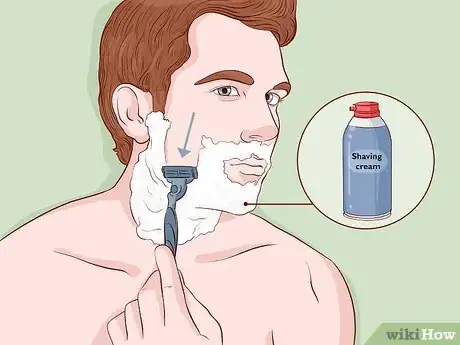







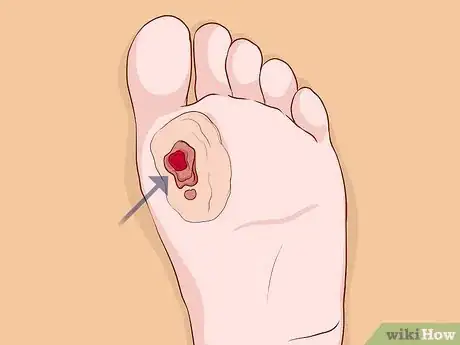
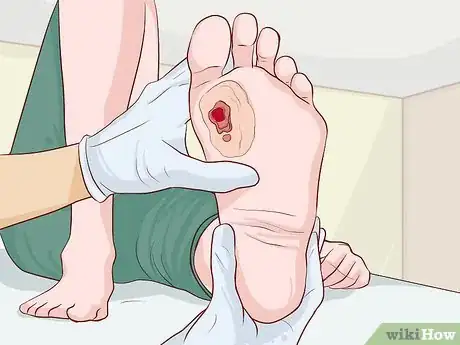








-Step-12-Version-3.webp)






















































Medical Disclaimer
The content of this article is not intended to be a substitute for professional medical advice, examination, diagnosis, or treatment. You should always contact your doctor or other qualified healthcare professional before starting, changing, or stopping any kind of health treatment.
Read More...